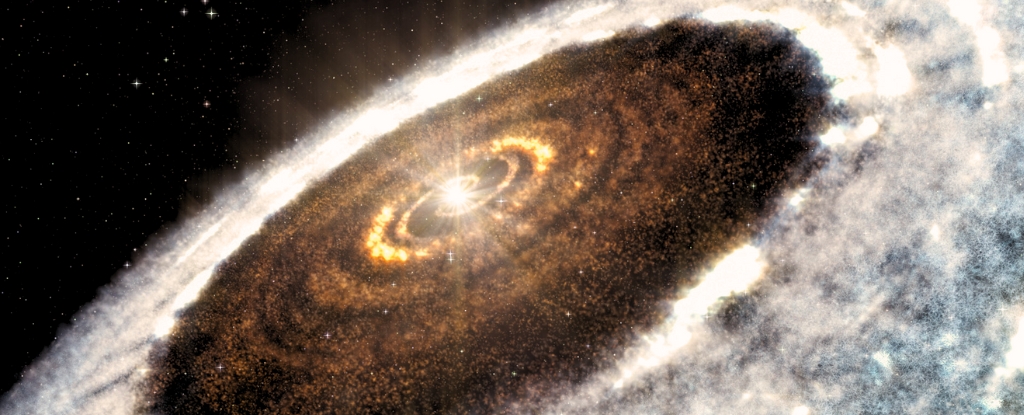
Researchers have made a groundbreaking discovery of complex organic molecules in the protoplanetary disk surrounding a newborn star, known as V883 Orionis, located approximately 1,350 light-years away. This marks the first detection of such molecules capable of forming the precursors to sugars and amino acids in a stellar nursery. The findings provide significant insights into the origins of complex life and how it may arise from chemical processes in space.
The study, led by Abubakar Fadul from the Max Planck Institute for Astronomy (MPIA) in Germany, utilized the Atacama Large Millimeter/submillimeter Array (ALMA) in Chile to analyze the light spectrum emitted by the star’s disk. The researchers identified at least 17 complex organic molecules, including ethylene glycol and glycolonitrile, both fundamental to the development of more complex biological structures.
Understanding the Origins of Life
Astrochemist Kamber Schwarz described the implications of these findings, stating, “Our results suggest that protoplanetary disks inherit complex molecules from earlier stages.” This highlights a potential continuity in the chemical evolution from interstellar clouds to fully formed planetary systems. The presence of these organic compounds in the protoplanetary disk of an outbursting protostar like V883 Orionis suggests that they may have originated from the surrounding molecular cloud, bridging an evolutionary gap between pre-stellar and post-stellar biochemistry.
The conditions necessary for the formation of these molecules are typically cold. Researchers believe the molecules formed on icy grains within the molecular cloud before clumping together into larger icy bodies. As V883 Orionis matured, increasing heat sublimated the ice, releasing the complex molecules into the disk, where they were detected by ALMA.
The Path Ahead for Research
Despite the exciting discovery, the detection signals were relatively weak, indicating the need for higher-resolution observations at longer wavelengths. These future studies will not only confirm the identified molecules but are expected to uncover additional organic compounds. Researchers express particular interest in locating nitrogen-containing molecules, which were surprisingly underrepresented in the current data.
Fadul noted, “Perhaps we also need to look at other regions of the electromagnetic spectrum to find even more evolved molecules. Who knows what else we might discover?” This ongoing research is critical for understanding the complex chemistry that leads to the formation of life as we know it.
The findings have been documented in the latest issue of The Astronomical Journal, further pushing the boundaries of our knowledge about the origins of life and the intricate processes at play in the cosmos.







